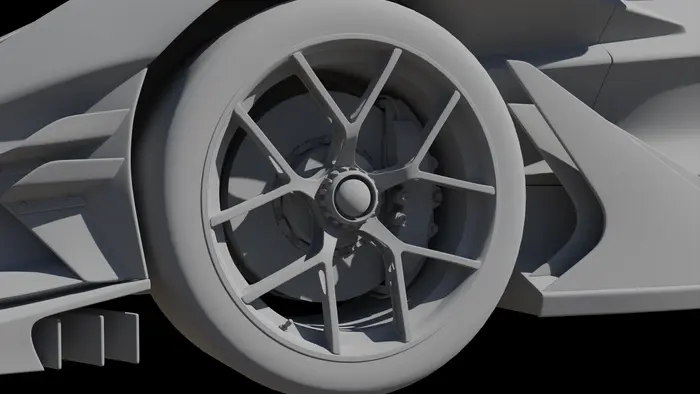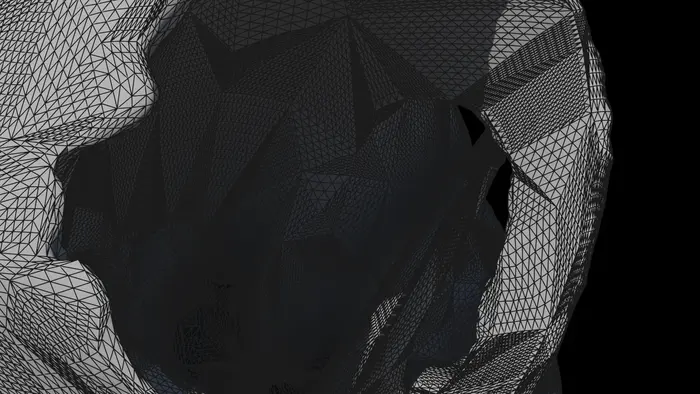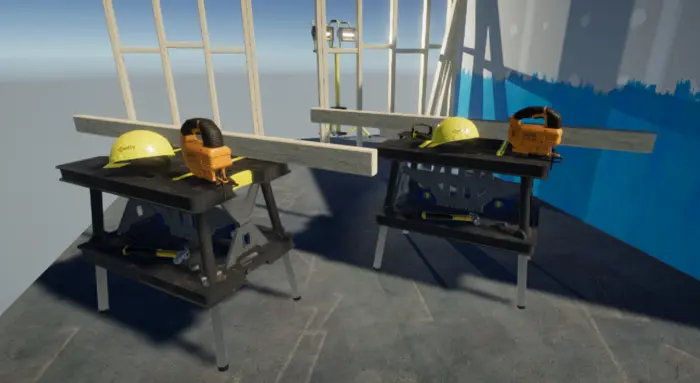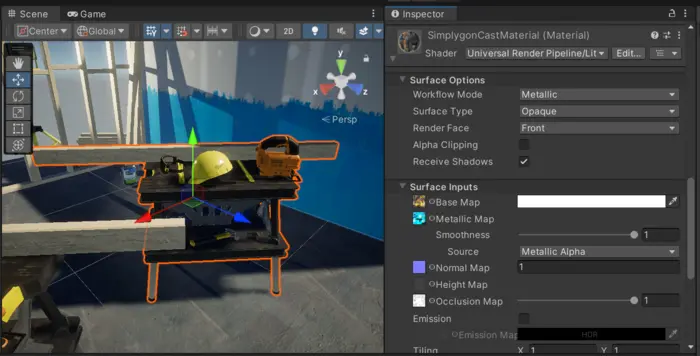What's new in Simplygon 10.2
As a Midsummer gift to all game developers we are proud to release Simplygon 10.2! In this release we have worked on core improvements to our remesher. It is now significantly faster, requires less memory and gives better quality result. With built-in support for tessellated attributes you can now push the density of your remeshings even further than before.
Simplygon 10.2 adds support for Unity's Universal Render Pipeline and High Definition Render Pipeline. We are thrilled to help optimize Unity games both for low end devices and virtual reality but also the Unity projects pushing the engine's graphic quality to the limits.
Unreal developers can enjoy support for Unreal Engine 5.2. Lastly we got some new ease of use features for customers using the well received compute caster.
Remesher improvements
Meshes in video games are becoming denser and denser and with that, asset optimization becomes more important. The trend we are seeing with proxy creation is that the original meshes contains more data, but also that the proxy meshes needs to be of increased quality as switching distance draws close to the camera.
To make proxy creation for game developer easier we have spend a lot of the time this release working under the hood with our remesher to ensure it can tackle these demands.

The improvents we have done to the remsher makes it significantly faster while at the same time require significantly less memory during processing. This enables you to perform remeshings on assets at higher screen sizes than what was previously possible.
We have also improved the quality of the remeshing by making it handle indentations better. This to ensure that it does not change the mesh siluette when performing hole filling.
Car example 1 - Wheel
 |
| Original asset |


Car example 2 - Rear of the car
 |
| Original asset |
 |
 |
| Old remeshing algorithm | New remeshing algorithm |
Tessellated attributes in remesher
The remesher now supports tesselation directly without the use of a mapping image. This enables you to create remeshings where the density and quality of the mesh is on pair with LOD0.
Example - Photoscanned skull optimization
 |
| Photoscanned skull optimizations Original to left - remeshing in middle - tessellated remeshing to right. |
Example - Photoscanned skull eye socket silhouette preservation
 |
| Original eye socket |
Remeshed eye socket without tessellation
This is eye socket remeshed at 1000 pixels. Notice that silhouette details disappears on the tight eye socket parts.
 |
 |
| Wireframe for remeshed eye socket at 1 000 pixels without tessellation applied | Remeshed eye socket at 1 000 pixels without tessellation applied |
Remeshed eye socket with tessellation
Let's look at the results when tessellation is applied. Details on eye socket silhouette is matching original asset. We could add additional details by increasing tessellation or bake them into a normal map.
 |
 |
| Wireframe for remeshed eye socket at 1 000 pixels with tessellation applied | Remeshed eye socket at 1 000 pixels with tessellation applied |
Remeshed eye socket, side by side comparison
Let's compare remeshing without and with tessellation applied, side-by-side. Pay attention to silhouette preservation to the right.
 |
 |
| Remeshed eye socket at 1 000 pixels without tessellation applied | Remeshed eye socket at 1 000 pixels with tessellation applied |
For now, tessellation is an API only feature. An example on how to use it can be found in the API examples. After processing, the tessellated data can either be applied to the output mesh to create a dense exported mesh or saved in a .bary file for use with Nvidia's Micro-mesh techology together with a low poly base mesh.
And more
The most exciting news we can share is that these core improvements in the remesher is just preparation work for things to come in the future. Stay tuned. For more information about our remesher read our documentation.
Unity Universal Render Pipeline (URP)
Simplygon 10.2 adds two well requested Unity features. First one is material casting support for Unity's Universal Render Pipeline (URP). This allows games aimed at low end platform and virtual reality headsets where optimization is of uttermost essence to utilize the full potential of Simplygon's suite.
This is possible thanks to the Compute Caster we introduced in Simplygon 10.1. With it we can use the same shaders Unity uses to render the game to optimize the game assets.
 |
| URP assets and optimized asset. Original asset to left, aggregated asset with material merged to right. |
 |
| Aggregated URP asset material output |
 |
| Aggregated URP texture output |
Unity High Definition Render Pipeline (HDRP)
The second new feature is support for Unity's High Definition Render Pipeline (HDRP). This ensures that game developers aiming to push the graphic quality of their games to the limit can do so without hurting the performance. Just as with the case above, HDRP uses Compute Caster to perform material casting.
 |
| Vegetation optimization in HDRP. Original vegetation asset at 360 triangles to left. Optimized asset using billboard cloud to right at 17 triangles. |
 |
| Billboard cloud HDRP textures output |
Another quality of life improvements for Unity developers is that the Unity plugin now comes in the form of a Unity package. This makes it much easier to install and keeps your Unity project nice and clean.
Some limitations to be aware of in this first release of URP and HDRP support is following.
- Detail map in HDRP is not supported yet.
- Specular setup is not supported.
- Material is not automatically set to alpha cutout after processing.
- If no material casting has been done, as in case of ordinary reduction, a duplicate material with only the base material channels supported by USD will be assigned to it. It is advisable to reassign the original material.
- Multiple UV set not supported.
Lastly, the Unity plugin now supports Unity 2021 LTS and Unity 2022.2. For more information about our Unity plugin read our documentation.
Compute caster improvements
Since we released the compute caster with Simplygon 10.1 we have been blown away at the great reception it's been given and we have already seen it being used in several large scale projects. It is clear from our point of view that this is the correct way forward when it comes to how to perform material casting - giving you as developer full control of how material casting is calculated.
Since the initial release of Simplygon 10.1, several improvements and new features have been added. The most major one is an ease of life improvement for how to describe the materials in a scene. You can now define evaluation shaders, texture samplers and custom buffers in an xml file rather than in code. An example of this can be found in the API examples.
We have also added support for texture arrays and custom buffers which can contain any data you want. For more information about compute caster and supported features read our documentation.

Unreal Engine 5.2 support
With Simplygon 10.2 we continue our commitment to support Unreal Engine developers. We are now adding support for Unreal Engine 5.2 with the same feature parity as previous versions. The only difference users will notice is that we have updated the user interface when you choose to use Simplygon for mesh simplification.
For more information about our Unreal Engine 5 plugin read our documentation.
And more
Simplygon 10.2 comes with lots of minor bug fixes and improvements that can be read in the release notes.
